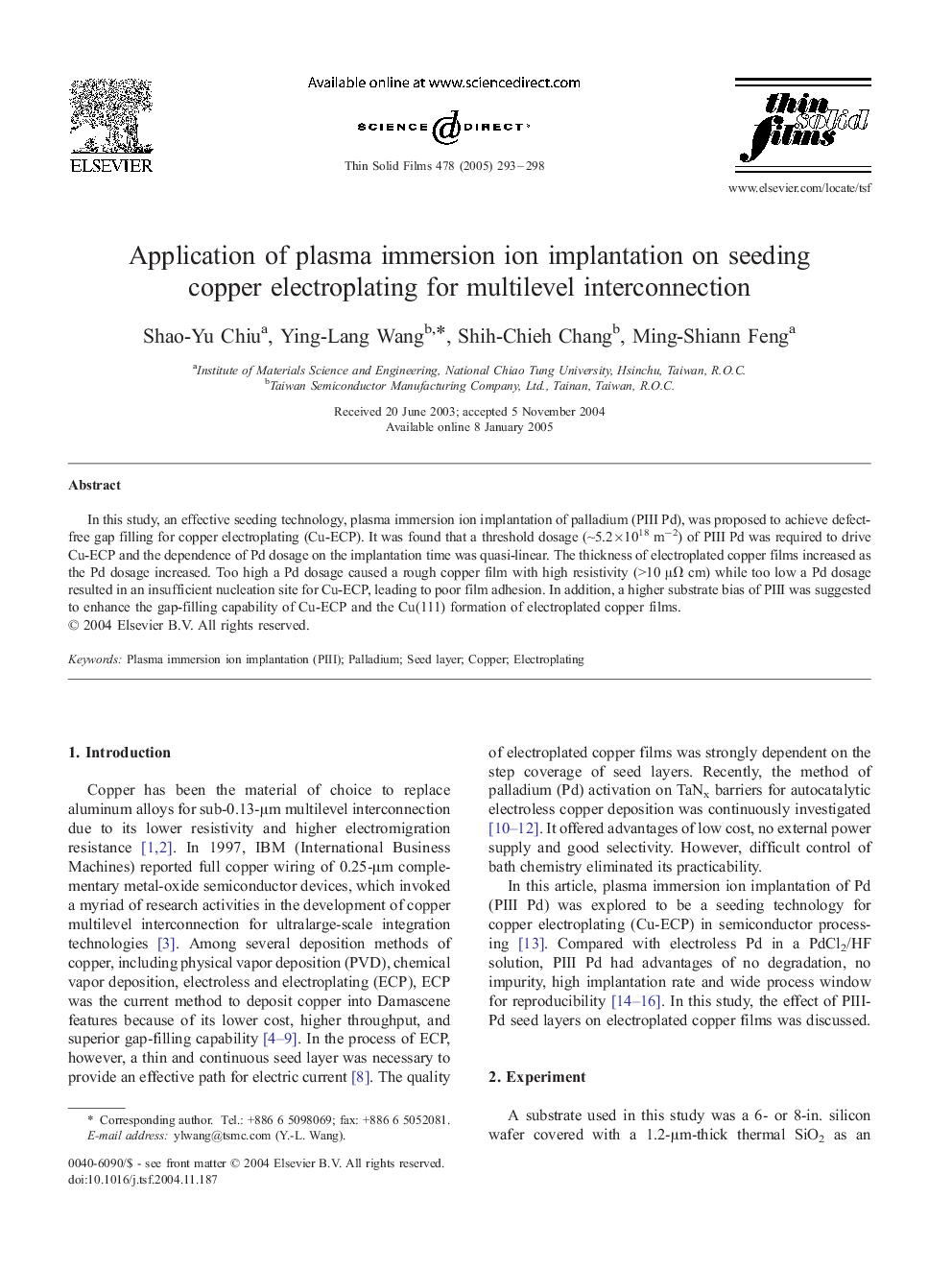| Article ID | Journal | Published Year | Pages | File Type |
|---|---|---|---|---|
| 9812817 | Thin Solid Films | 2005 | 6 Pages |
Abstract
In this study, an effective seeding technology, plasma immersion ion implantation of palladium (PIII Pd), was proposed to achieve defect-free gap filling for copper electroplating (Cu-ECP). It was found that a threshold dosage (â¼5.2Ã1018 mâ2) of PIII Pd was required to drive Cu-ECP and the dependence of Pd dosage on the implantation time was quasi-linear. The thickness of electroplated copper films increased as the Pd dosage increased. Too high a Pd dosage caused a rough copper film with high resistivity (>10 μΩ cm) while too low a Pd dosage resulted in an insufficient nucleation site for Cu-ECP, leading to poor film adhesion. In addition, a higher substrate bias of PIII was suggested to enhance the gap-filling capability of Cu-ECP and the Cu(111) formation of electroplated copper films.
Related Topics
Physical Sciences and Engineering
Materials Science
Nanotechnology
Authors
Shao-Yu Chiu, Ying-Lang Wang, Shih-Chieh Chang, Ming-Shiann Feng,
